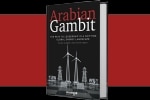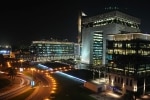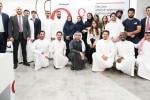Megaprojects can shape the future of the Middle East
- Megadevelopments will persist despite the COVID-19 pandemic
- Strategy& outlines three guiding principles for the sustainable development of megaprojects
- Dubai is a prime example of how megadevelopments can be effective engines of socioeconomic development
Megadevelopments, the largest construction and development projects in the Middle East, must begin with a robust, customer-focused and adaptable concept to succeed and deliver on their promise of broad socioeconomic impact, according to a new report entitled ‘Megadevelopments in the Middle East: Defining successful concepts that stand the test of time’ by Strategy& Middle East, part of the PwC network.
Around the world and in the Middle East, megadevelopments – which include mixed-use development projects spread across hundreds of thousands of square meters – have been used to pursue numerous socioeconomic goals and achieve national-level ambitions. Among the most important are:
- Introducing a new, improved urban offering with the goal of enhancing quality of life
- Regenerating an underutilized or previously neglected area
- Promoting the development of specific economic sectors, such as financial services, tourism, or manufacturing
- Showcasing a country’s cultural richness to enhance its international status
In the UAE, for example, Downtown Dubai transformed an empty plot of land into a global tourism destination and one of the city’s most desirable residential areas. Downtown Dubai has been a resilient project. Although the first phase was completed around the time of the 2009 market downturn, Dubai Downtown has been a success for its developer, investors, residents, and millions of visitors. Additionally, DIFC, which is a leading hub for financial services in the Middle East, is now home to more than 2,200 registered companies and 24,000 employees. Demonstrating the flexibility of the initial concept, DIFC is now expanding to attract financial technology and professional services.
“Megaprojects such as those we’ve seen in Dubai, or even Canary Wharf in London, can have a lasting impact when they succeed,” said Karim Abdallah, partner and leader of the real estate platform at Strategy& Middle East. “Success, however, is never assured. With these developments requiring large amounts of capital and generally more than a decade to execute, it is imperative that they begin with a concept that sets the project up for future success and adapt in the face of unexpected events, such as the ongoing Covid-19 pandemic,” he added.
To ensure sustainable success, the Strategy& report identified three distinct guiding principles.
1. Be rooted in the context
The first principle is to be rooted in context. In practice, this means starting with a clear and complete understanding of a project’s external context, including its constraints. This, in turn, will allow various stakeholders to properly identify all opportunities to capture demand and enhance the concept.
Ramy Sfeir, partner and leader of the Family Business, Multi-sector Investments, Real Estate and Consumer Markets practices at Strategy& Middle East, said: “A vital part of beginning with a principle rooted in context is understanding the interests, needs and preferences of all the main stakeholders, including the end users who determine demand, the partners who invest in, develop and operate assets, regulators, employees and the wider community”.
2. Be clear, customer centric, and coherent
The second principle that can ensure success is to have a concept with a clear focus and well-defined priorities, which stands in stark contrast to the often used “everything for everyone approach”, which in many cases leads to a badly defined concept and offerings that are neither attractive nor different. A customer-centric approach to a megaproject must ask itself a number of important questions. Who is the project targeting? What elements does it need? What will need to be built and offered?
Sami Khawaja, principal with Strategy& Middle East, said: ““Around the world, the most successful megaprojects are those that ensure that the vision, target segments, value propositions and project elements are coherent among themselves and aligned to the context. This also ensures that these projects are delivered in the most effective and efficient manner.”
3. Be flexible
The third and final principle is to be flexible, particularly in the face of inevitable market changes and changes to customer preferences. To be flexible, developers can ensure that their particular megaproject can include stable and large recurring revenue streams that can cover operating expenses and provide a source of funding for later phases in the event that funding dries up.
Karim Abdallah further added: “Developers can also use several new partnership models that can do a better job of allocating available funds and managing – and mitigating – risks. In the case of retailers and commercial businesses, for example, tenant pre-commitments can allow developers to obtain pictures of demands, while with residential assets, pre-sales can be used to enhance a project’s cash flow. Turning to sub-developers can also serve to reduce capital outlay and risk.”
Importantly, a flexible approach will also mean that developers should stress test their financial forecasts under different scenarios, as well as having an institutional setup that can ensure project continuity and a dedicated regulator that can develop tailor-made guidelines and approaches to a particular project.

















Menu